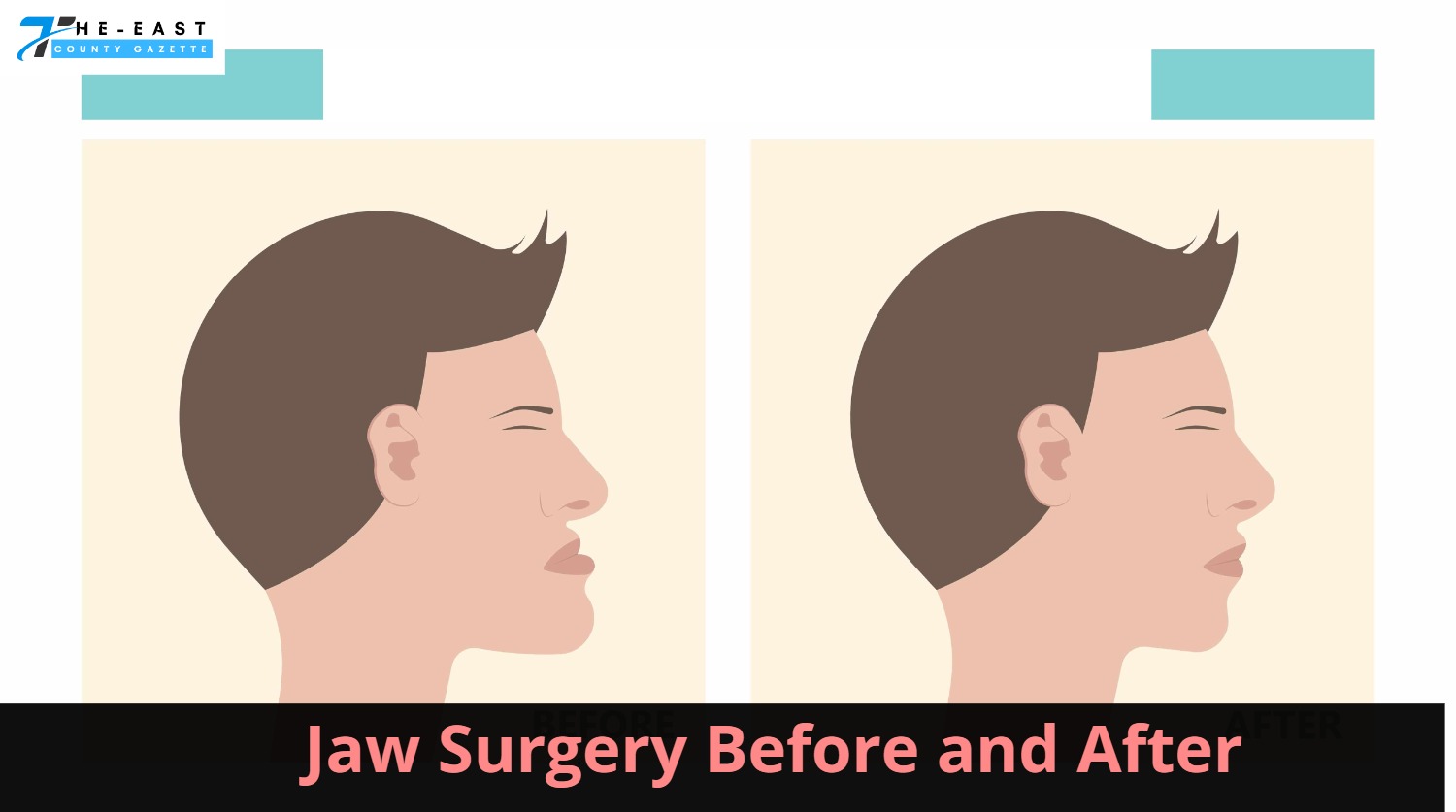CASE 1: JAW SURGERY BEFORE & AFTER
There is a wide range of severity and associated problems associated with hemifacial/craniofacial microsomia, which is known by a variety of names such as Goldenhar syndrome and the oculo-auriculo-vertebral spectrum.
Rarely, a child may be born with a subtly smaller lower jaw or ear. Some kids have serious problems with asymmetry affecting their eyes, ears, cheeks, upper and lower jaws, and even nerve function.
The heart, the kidneys, the spine, and the arms and hands should all be checked for possible damage. Each child requires a specialized treatment plan due to their individual needs.

It is always the intention to provide the best opportunity for a long and healthy life with as few procedures and dangers as possible.
This man’s occlusion was extremely angled, causing him discomfort and popping in his TMJs.
Also Read: Hunter Schafer Before and After Surgery: What Surgery did the Actress Undergo?
We replaced the temporomandibular joint (TMJ) in the patient’s upper and lower jaws to fix the problem.
To give his bones time to develop and recover fully, we waited until he was done with his athletic career.

There is no longer any popping or soreness in his jaw after the first few months of healing, and his symmetry has also improved.
If further correction of any asymmetry is necessary, other treatments like fat grafting may be provided.
CASE 2: JAW SURGERY BEFORE & AFTER
Orthognathic surgery, sometimes known as “jaw surgery,” involves moving the jaws into a new position to fix various issues.
Patients who come to us with a cleft history typically get this procedure.

There’s a chance that your upper jaw won’t develop at the same rate as your lower one. Because the teeth are out of alignment, chewing is impacted.
Patients with overbites, underbites, open bites, and cants, as well as those with sleep apnea, are candidates for this operation (like with hemifacial microsomia).
CASE 3: JAW SURGERY BEFORE & AFTER
Beautiful as he is, this young man has a history of a cleft lip and palate on one side.
In this photo, he is seven months out from his rhinoplasty and one month out from his jaw surgery (maxillary advancement, mandibular setback, and chin advancement).
His bite is now centered and balanced, and he can eat more efficiently as a result. The long-term effects on TMJ and dental health will be beneficial.

The enhancements to his top lip and chin provided a more symmetrical and balanced appearance to his face.
As though he had a Breathe-Right strip along the inside of his nose, the rhinoplasty helped his breathing by straightening the septum and supporting his nasal passages.
After having the muscle of his lip reattached and reoriented, his scar will improve even further.
CASE 4: JAW SURGERY BEFORE & AFTER
Please take a look behind the scenes at one of our star patients who has dealt with a particularly unusual form of the facial cleft in the past.
She’s already undergone several operations with another group, and she came to us to fix her jaw.
Her upper jaw did not develop to the same extent as her lower jaw, a common occurrence among our cleft and craniofacial patients. The alignment of the jaws was poor, as well.

As a result, you may have trouble chewing your food correctly, develop dental problems, and have pain in your jaw.
They use 3D planning to map out her surgery’s movements and final implants for excellent stability and predictability.
Here she is at two months, with future progress photos guaranteed!
Also Read: “90 Days Fiance”: Are Angela and Michael still together?
CASE 5: JAW SURGERY BEFORE & AFTER
Despite having his bilateral cleft lip and palate corrected, this young guy had trouble chewing since his upper and lower teeth did not meet in a normal position.
In our patients born with a cleft, the upper jaw often does not grow as much as the lower jaw, or it may become canted.
Although not every cleft patient requires this procedure, we do execute it frequently due to the high volume of both cleft and non-cleft craniofacial patients we treat.

To reduce the likelihood of additional procedures, we typically wait until patients have reached skeletal maturity before performing this surgery.
When the discrepancy between the upper and lower jaws is particularly extreme, we sometimes resort to distraction surgery before complete maturity, even though it’s possible that more correction will be required later on.
The photo was taken six weeks following surgery, so his splint is gone, and his smile is wide.
Source: Law Plastic Surgery

